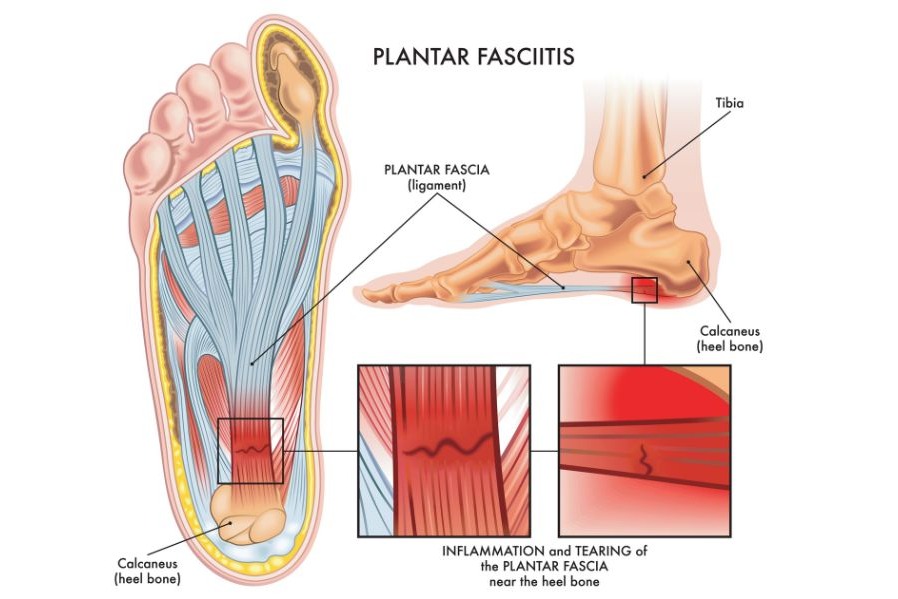



Best Physiotherapy Treatment for Plantar Fasciitis One of the most frequent reasons for heel discomfort is plantar fasciitis. It involves inflammation of the plantar fascia, a strong band of tissue that connects the heel bone to the toes and runs across the bottom of each foot. Stabbing pain that frequently happens with your first morning steps is a common symptom of plantar fasciitis. The pain usually goes away when you walk, but it may come back after standing for extended periods of time or after standing after sitting.Usually, plantar fasciitis results in a sharp pain at the heel in the sole of the foot. The first few steps after waking up are typically the most painful, though prolonged standing or getting up from a sitting position can also cause it.Your heel bone and the base of your toes are connected by a band of tissue called the plantar fascia. When walking, it absorbs shock and supports the foot's arch. Tiny tears may result from tension and stress on the fascia. Although the exact etiology of plantar fasciitis is often unknown, repeated straining and tearing of the fascia can irritate or inflame it.Certain variables can raise your risk of developing plantar fasciitis, even though it can occur for no apparent reason. Among them are: Age. People between the ages of 40 and 60 are most likely to suffer from plantar fasciitis. specific forms of physical activity. Plantar fasciitis can develop as a result of activities that put a lot of strain on your heel and surrounding tissue, such as aerobic dancing, ballet dancing, and long-distance jogging. foot mechanics. A high arch, flat feet, or even an unusual gait might alter how your weight is distributed while standing and increase strain on your plantar fascia. being overweight.Chronic heel pain that interferes with daily activities can be caused by ignoring plantar fasciitis. In order to prevent plantar fasciitis pain, which could result in issues with your feet, knees, hips, or back, you need probably alter the way you walk.
We hate spam too.